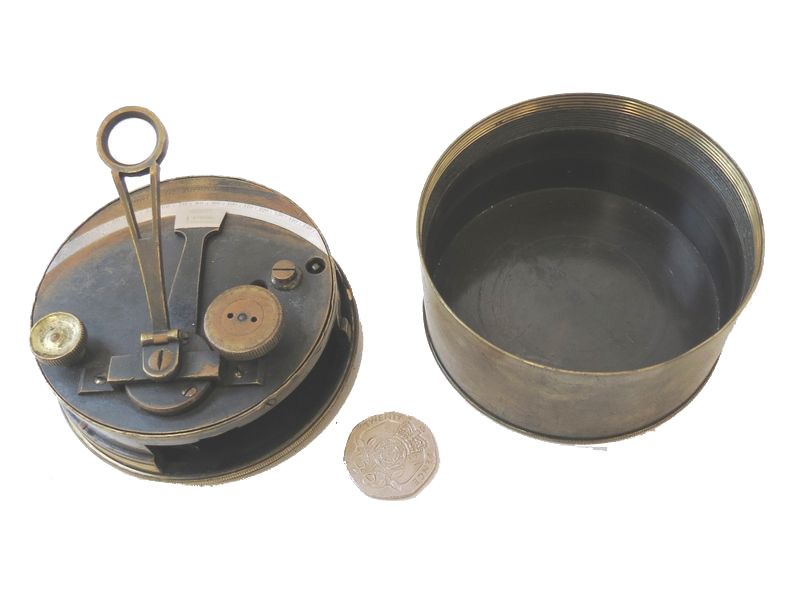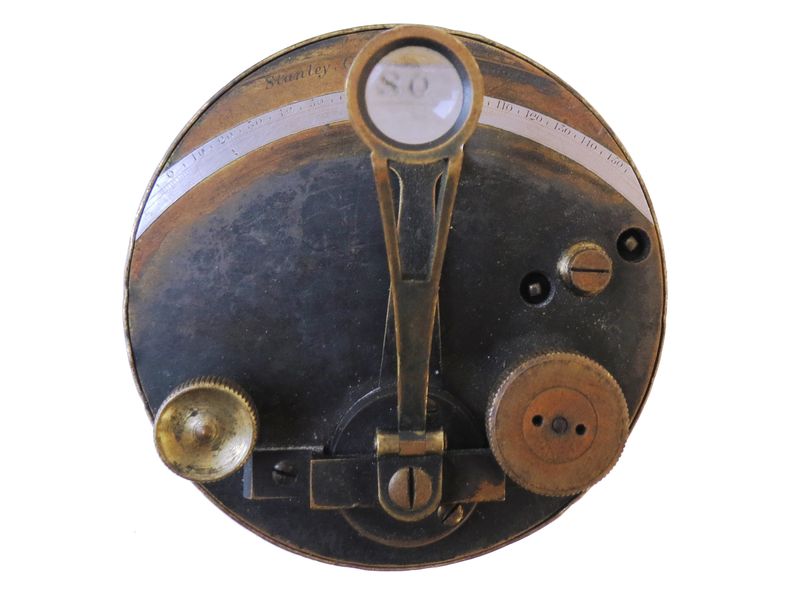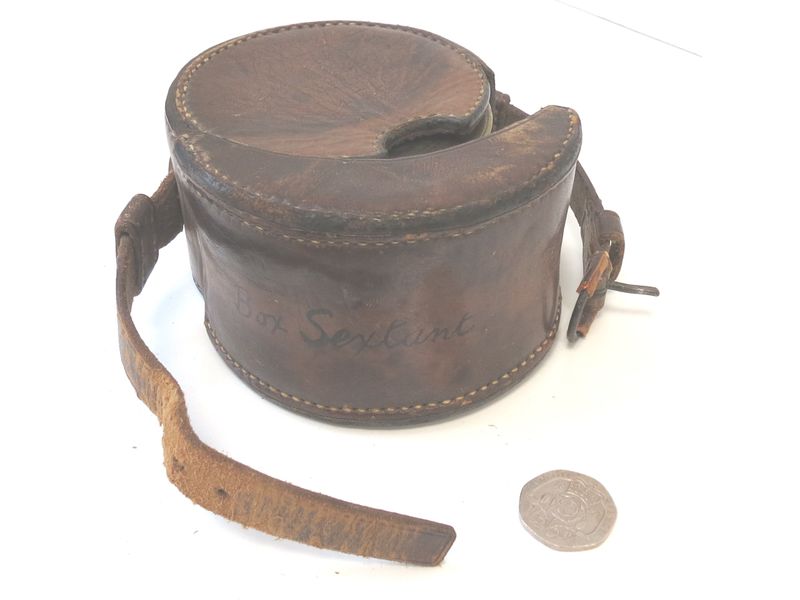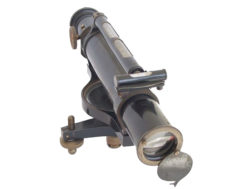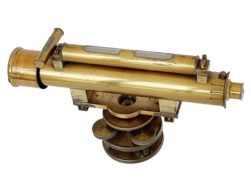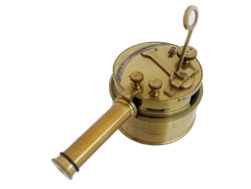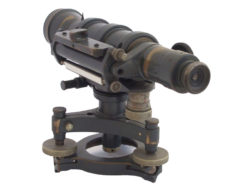Description
Box sextant in a leather case manufactured by Stanley. It is used for observing and setting out angles up to 120°. In principle it is the same as an optical square except that the user can adjust the angle by rotating one of the mirrors. The instrument can be fitted with a small telescope for long distance sightings.
The Box Sextant, as its name indicates, is an angular instrument enclosed in a box, which is unscrewed when required for use. It possesses the advantage of being portable and of requiring no other support than the hand. As a pocket instrument its accuracy of reading, in comparison with magnetic instruments, is greatly in its favour. The principle of this instrument resembles that of the optical square in depending primarily upon the following facts:—(1) When a ray of light is reflected at a plane surface the reflection takes place in a plane perpendicular to the reflecting surface, the incident and reflected rays making equal angles with this surface; (2) when a ray of light proceeds in a plane, at right angles to each of two plane mirrors, inclined at any angle to one another, and is successively reflected at the plane surfaces of the mirrors, the total deviation of the ray is double the angle of inclination between the mirrors. The angles so formed by the glass mirrors in the case of the optical square was seen to be fixed at 45°, giving a right angle between two directions; but in the case of the box sextant, one glass, namely, the one containing the complete mirror, is constructed to revolve upon a centre, and worked by means of a curved rack-and-pinion wheel, concealed within the box. The angles are marked to read from zero to 120°.
(Ref: Walmisley A.T. Field Work and Instruments. D Fourdrinier, London. 1900.)

